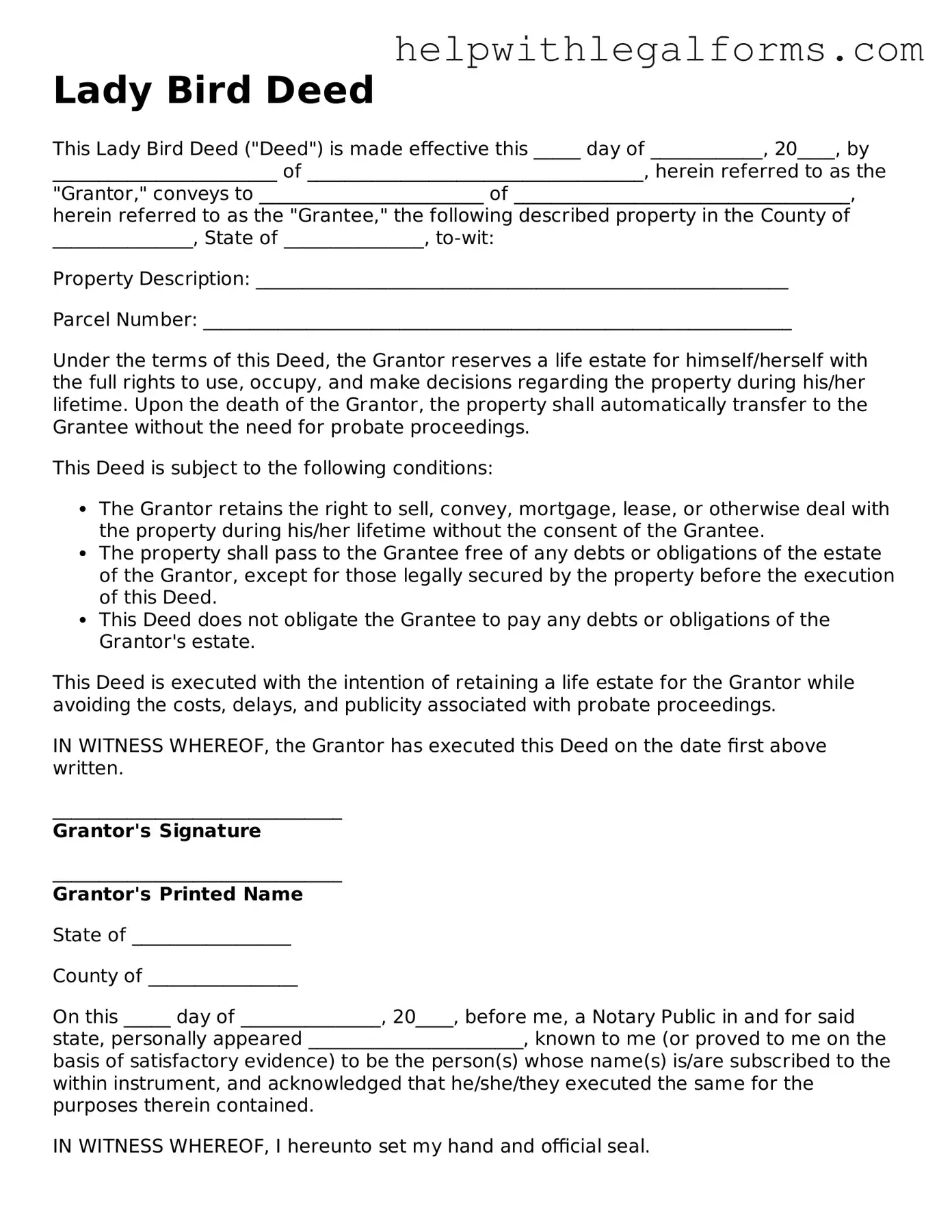Lady Bird Deed
This Lady Bird Deed ("Deed") is made effective this _____ day of ____________, 20____, by ________________________ of ____________________________________, herein referred to as the "Grantor," conveys to ________________________ of ____________________________________, herein referred to as the "Grantee," the following described property in the County of _______________, State of _______________, to-wit:
Property Description: _________________________________________________________
Parcel Number: _______________________________________________________________
Under the terms of this Deed, the Grantor reserves a life estate for himself/herself with the full rights to use, occupy, and make decisions regarding the property during his/her lifetime. Upon the death of the Grantor, the property shall automatically transfer to the Grantee without the need for probate proceedings.
This Deed is subject to the following conditions:
- The Grantor retains the right to sell, convey, mortgage, lease, or otherwise deal with the property during his/her lifetime without the consent of the Grantee.
- The property shall pass to the Grantee free of any debts or obligations of the estate of the Grantor, except for those legally secured by the property before the execution of this Deed.
- This Deed does not obligate the Grantee to pay any debts or obligations of the Grantor's estate.
This Deed is executed with the intention of retaining a life estate for the Grantor while avoiding the costs, delays, and publicity associated with probate proceedings.
IN WITNESS WHEREOF, the Grantor has executed this Deed on the date first above written.
_______________________________
Grantor's Signature
_______________________________
Grantor's Printed Name
State of _________________
County of ________________
On this _____ day of _______________, 20____, before me, a Notary Public in and for said state, personally appeared _______________________, known to me (or proved to me on the basis of satisfactory evidence) to be the person(s) whose name(s) is/are subscribed to the within instrument, and acknowledged that he/she/they executed the same for the purposes therein contained.
IN WITNESS WHEREOF, I hereunto set my hand and official seal.
_______________________________
Notary Public
My Commission Expires: _______________
